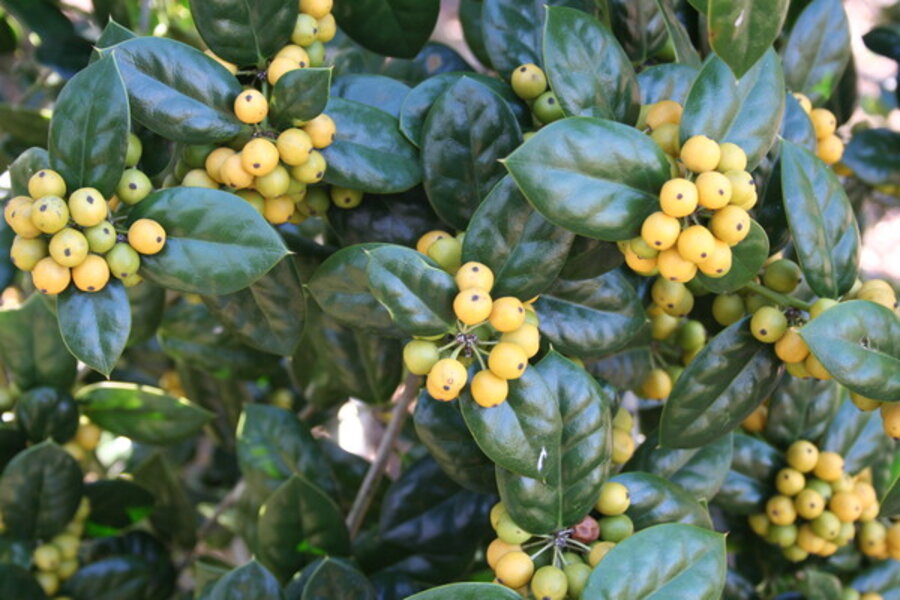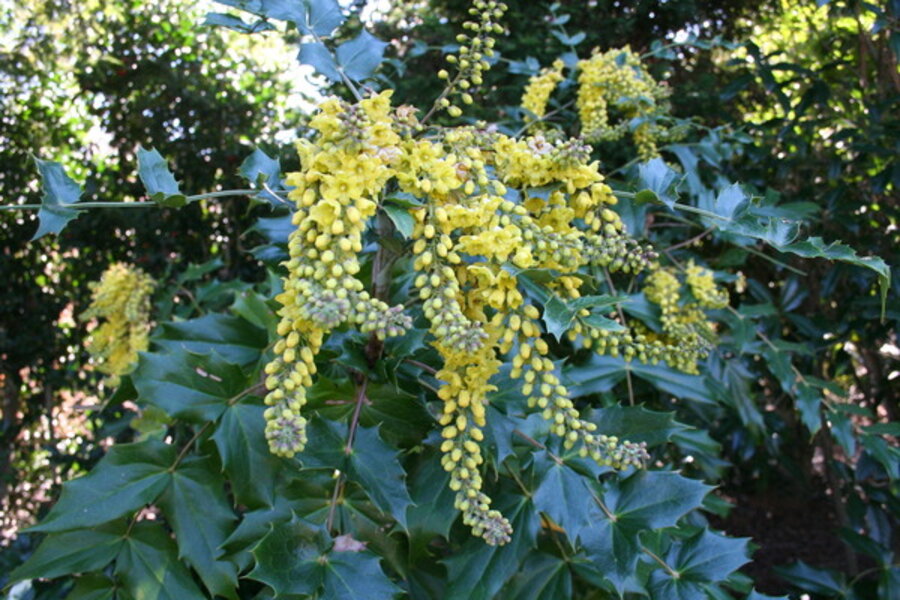The rewards of winter gardening
Loading...
[Editor's note: March weather is hard to predict. In some places in the US today, it's snowing and sleeting. In others, it's sunny and temperatures are in the 70s. But whatever it's like where you live, it's a good time to look back on the winter gardening experience, as Helen Yoest does, and see its rewards.]
The sun is low on most winter days, but my hopes are high. When I walk my garden during the winter, I hope to find solace in nature. As I look around, the trees, void of leaves, show me structure and strength. They make me feel stronger with every step I take.
Color from the bark, mottled or brightened in its winter hue, intrigues me. I can stare at it in wonder; something that would never occur in the summer when there is a riot of colorful stimuli.
Color in the winter garden
The white trunk of the sycamore (Platanus occidentalis), the red-colored new growth of the coral bark maple (Acer palmatum 'Sango-kaku’), and the overlapping of browns, tans, and grays found on the main stem of the crepe myrtle (Lagerstroemia i.x fauriei 'Natchez') are just a few winter barks that add excitement in my winter garden.
Evergreen foliage is a misnomer when the green of summer turns yellow in the winter for certain pine trees. ‘Wate’s Golden Pine’ (Pinus virginiana) and the Eastern white pine, ‘Hillside Winter Gold’ (Pinus strobus) at first had me fearful of distress until I remembered this is their winter tone, and it was the reason why I added them to Helen’s Haven.
As I move on through the garden, I hope to find the sweet scent of flowers. I’ve been known to be boastful about my winter buds. I’m rather evangelical about winter gardening. I like to catch people off guard by showing them flowers in bloom. There are mahonia [see second photo above; click on the arrow at the right base of the first photo], daffodil, camellia, and hellebores flowering in my fourth season. There are snowdrops, flowering apricot, crocus, and the cornflower-colored rosemary flowers. There are winter flowering iris such as the Iris unguicularis, aconite, and the sweet smell of Chimonanthus praecox (known simply as the fragrant wintersweet).
There are hollies with red berries, and others with yellow orbs [see first photo above], and blue-pointed berries on the juniper shrubs. The birds delight in these colorful offerings; as do I as I spy them in the garden.
It has long been my intention to teach my friends that gardening in winter is just as rewarding in January as it is in July; in many ways, even more so.
Observation more than 'doing'
Others have suggested that winter is a time for rest. Certainly in areas with a winter snow cover, the gardener may feel the need to snuggle down by the fire. In my Raleigh, N.C., garden, we often have mild temperatures in January, and we are rarely covered in snow. In fact, a snowfall means we must grab the camera and survey the land.
But even on an average day in the winter garden, the bugs are absent, the weeds asleep, and deadheading is not a chore. So you are still resting, but you moving as you do so.
Gardening in the winter is more about observing, then constantly doing. It’s about walking down the familiar paths with no sense of urgency, no need to grab a weed, or remove a yellowing leaf from an exhausted perennial. You are just observing.
Winter is also a good time to take on a project--straighten the stepping stones that sunk along the path or mend a fence, add lighting to your potting shed or paint a birdhouse to reflect your style.
-----
Helen Yoest blogs regularly about gardening at the Monitor. She lives in North Carolina and is the author of the book "Gardening With Confidence -- 50 Ways to Add Style for Personal Creativity." She's a garden writer, speaker, and garden coach. She's also a field editor for Better Homes and Gardens and Country Gardens magazines and serves on the board of advisers for the JC Raulston Arboretum. You can follow Helen on Twitter and Facebook. To read more of what she's written at the Monitor, click here.








